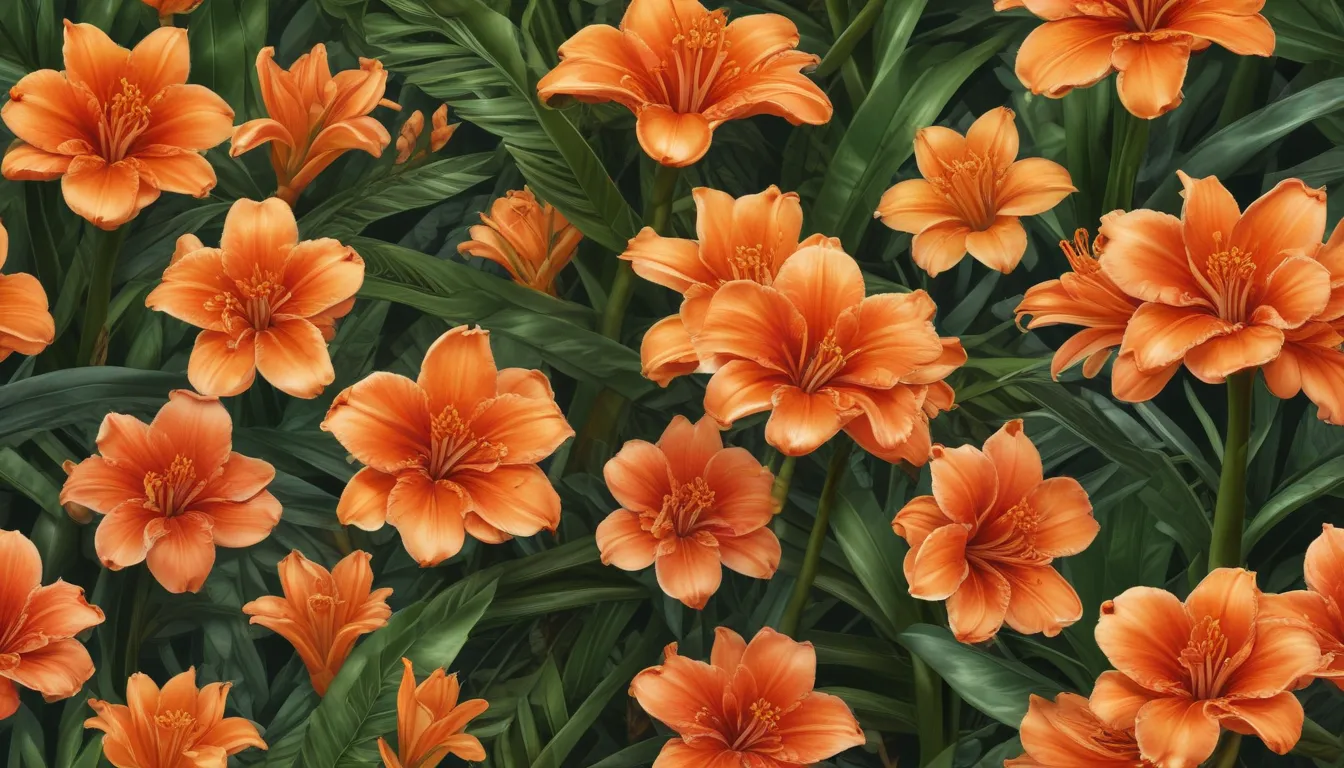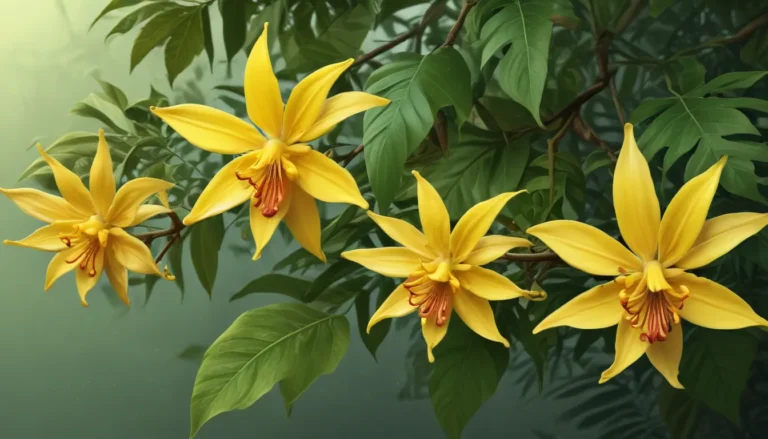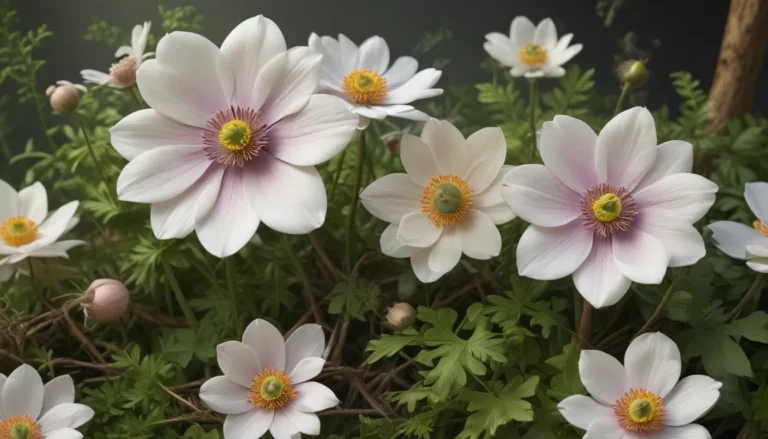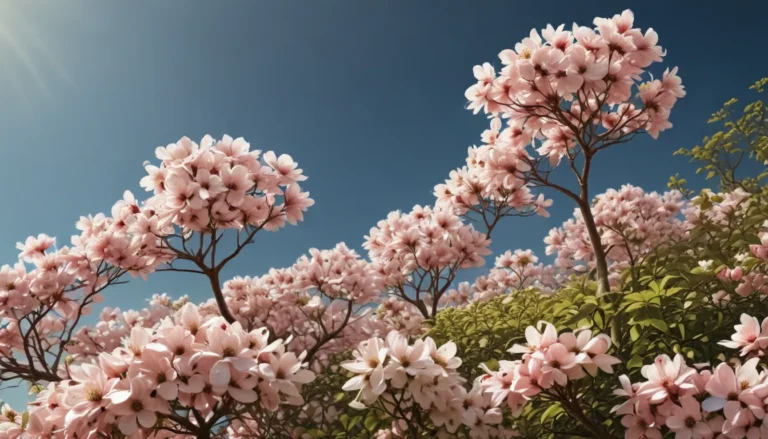The pictures we use in our articles might not show exactly what the words say. We choose these pictures to make you interested in reading more. The pictures work together with the words but don’t take their place. The words still tell you the important facts.
Introduction:
Clivia, also known as the bush lily, is a plant that has captured the hearts of plant enthusiasts and collectors worldwide. With its vibrant blooms and unique features, Clivia stands out as a remarkable plant with many enigmatic qualities waiting to be discovered. In this article, we will delve into the enchanting world of Clivia and uncover 16 intriguing facts about this captivating plant. From its origins and symbolism to its care requirements and unusual traits, there is so much to learn about Clivia that will leave you in awe.
Clivia: A Plant of Southern African Origins
Clivia is native to the lush woodlands of South Africa, where it thrives in subtropical climates, making it a popular choice for gardeners in warmer regions. With its vibrant blooms in shades of orange and yellow, Clivia adds a burst of color to any garden or indoor space, making it a popular choice for plant enthusiasts worldwide.
The Allure of Clivia’s Trumpet-Shaped Flowers
The trumpet-shaped flowers of Clivia are known for their stunning clusters and vibrant hues, ranging from fiery oranges to sunny yellows. This unique shape adds to the plant's allure, making it a standout among other flowering plants.
The Popular Houseplant: Clivia
Due to its ease of care and striking appearance, Clivia has gained popularity as a houseplant around the world. With its long, strap-like leaves and elegant aesthetic, Clivia is a plant that can thrive in both indoor and outdoor environments with proper care.
Unveiling the Origins of Clivia’s Name
The genus name "Clivia" is derived from Lady Charlotte Clive, the Duchess of Northumberland, who was a passionate botanist and plant collector. This historical connection adds to the charm and allure of the plant's name and legacy.
Symbolism of Clivia: A Plant of Good Luck
In some cultures, Clivia is believed to bring good fortune and prosperity to its owners, symbolizing luck and positive energy. It is often gifted as a token of good luck to friends and loved ones, adding a touch of positivity to any environment.
Cultivating Clivia: Care Requirements and Tips
- Clivia requires well-draining soil that retains moisture without becoming waterlogged. A mix of peat moss and perlite is recommended for optimal growth.
- After flowering, Clivia produces colorful berries that can be propagated to grow new plants.
- Clivia can be propagated through division, allowing gardeners to expand their collection or share the beauty of this plant with others.
- Whether grown indoors or outdoors, Clivia adapts well to different environments, thriving with proper care and attention.
- With a lifespan of several decades, Clivia plants can become long-lasting companions that bring beauty and joy to their surroundings.
A Fascinating Botanical Wonder: Clivia
Clivia plants are not only admired for their beauty but also hold cultural significance in countries like South Africa, where they are celebrated in festivals and ceremonies. Their vibrant blooms and ability to thrive in various environments make Clivia a beloved plant among gardening enthusiasts.
Conclusion
In conclusion, Clivia plants are fascinating botanical wonders with unique characteristics and qualities that set them apart from other plants. From their vibrant blooms to their ability to thrive in different conditions, Clivia plants are a popular choice for both indoor and outdoor cultivation. By exploring the world of Clivia plants and unlocking their mysteries, we can deepen our appreciation for these captivating plants and the joy they bring to our lives.
FAQs: Answering Your Clivia Questions
-
How often should I water my Clivia plant?
-
Clivia plants prefer slightly dry conditions, so allow the topsoil to dry out between waterings to prevent overwatering.
-
Can I grow Clivia plants indoors?
-
Yes, Clivia plants can thrive indoors with bright, indirect light and proper care to ensure their growth and development.
-
How often should I fertilize my Clivia plant?
-
During the growing season, fertilize Clivia plants every two to three weeks using a balanced, water-soluble fertilizer to support their growth.
-
How do I propagate Clivia plants?
-
Clivia plants can be propagated through division or by collecting seeds, allowing gardeners to expand their collection and grow new plants.
-
Do Clivia plants have specific temperature requirements?
-
Clivia plants prefer temperatures between 60-85°F and a humidity level of around 50-60% to thrive and flourish.
-
Are Clivia plants prone to pests or diseases?
- Clivia plants are generally resistant to pests and diseases but can be affected by mealybugs, scale insects, and root rot if overwatered. Regular inspection is key to maintaining their health.
Exploring the World of Clivia Plants
As we unravel the mysteries of Clivia plants, we discover a world of vibrant blooms, unique traits, and cultural significance. From their origins in South Africa to their symbolism of good luck, Clivia plants continue to enchant and inspire gardeners and plant enthusiasts around the world. By understanding the care requirements and characteristics of Clivia plants, we can cultivate these fascinating botanical wonders in our own homes and gardens, adding beauty and joy to our surroundings.
Remember, while Clivia plants are admired for their beauty, it is essential to handle them with care and respect their toxic nature if ingested. With proper care and attention, Clivia plants can become long-lasting companions that bring joy and positivity to our lives. Embrace the enchanting world of Clivia plants and unlock the mysteries of these captivating botanical wonders.






